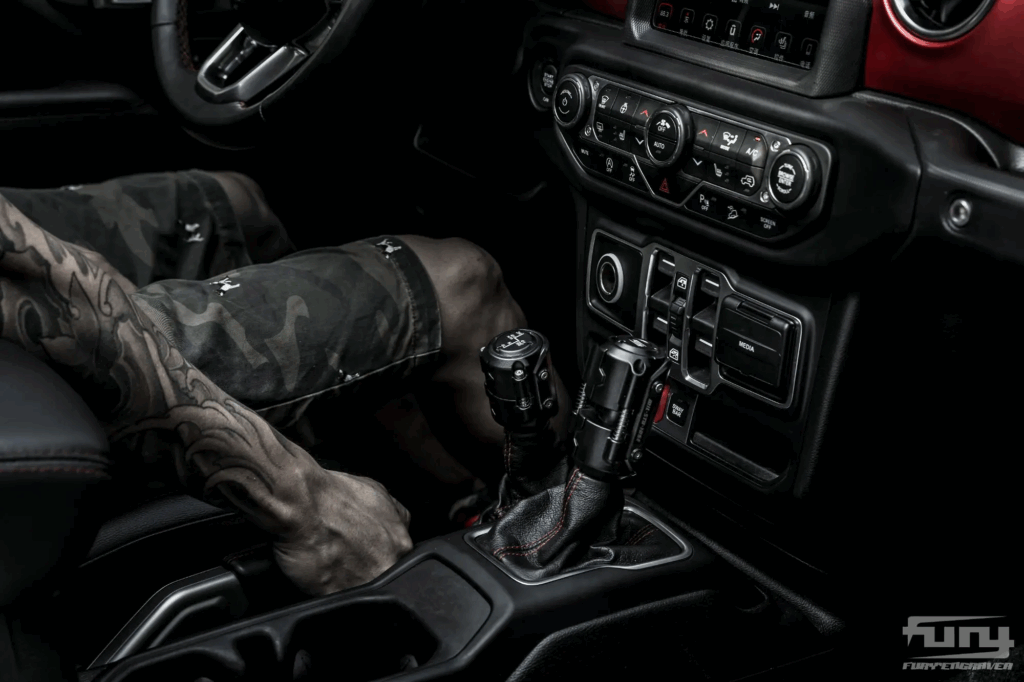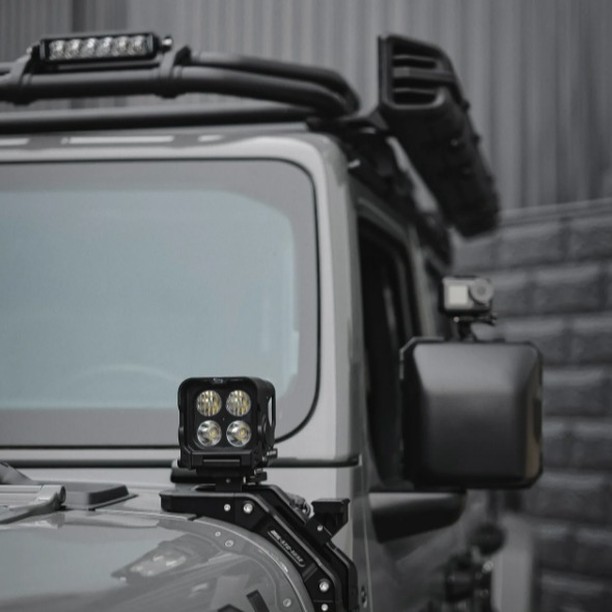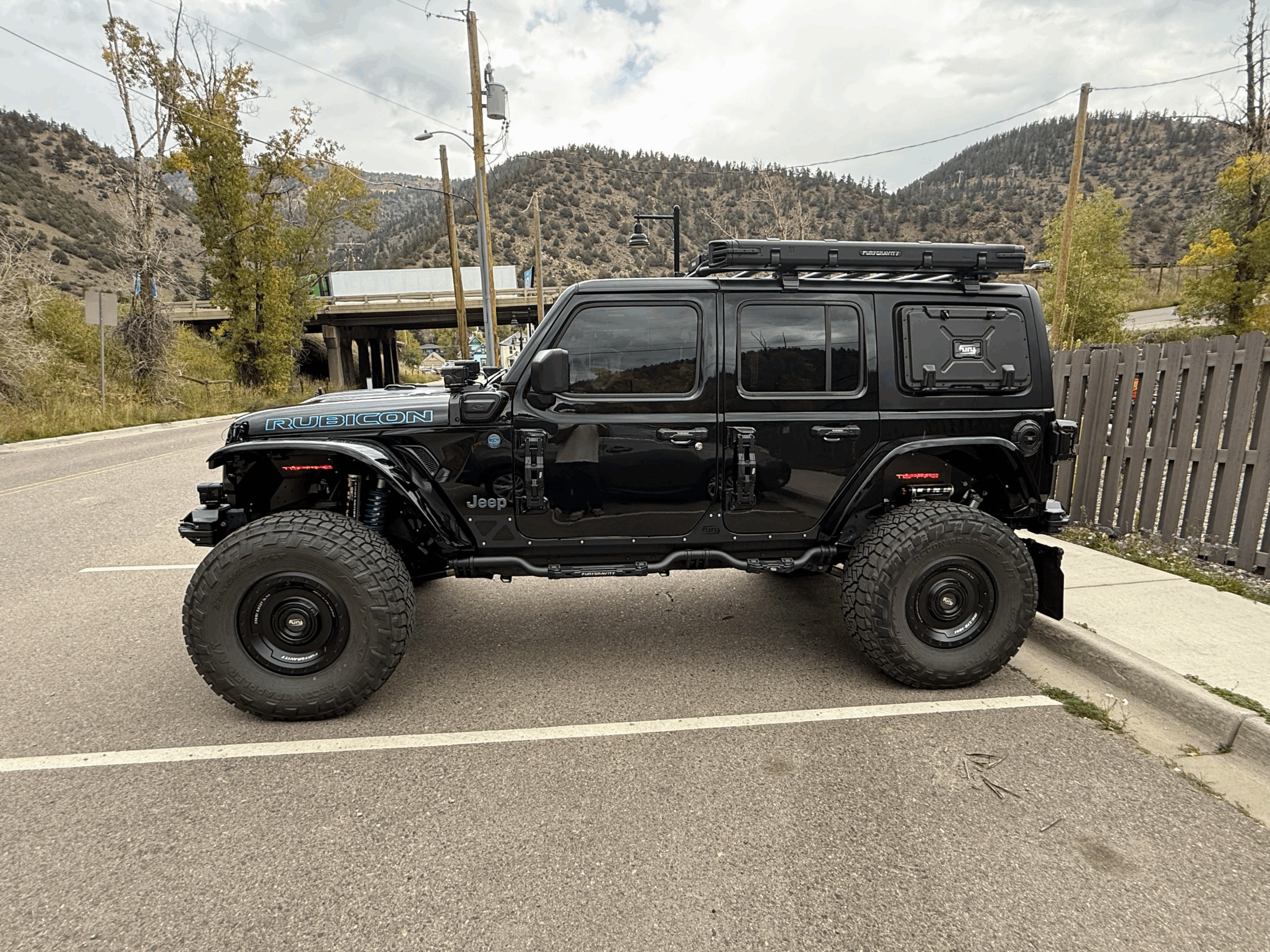A Colorado Driving Guide from High Altitude Mods
🏔️ Introduction: 4×4 Is Awesome… When You Know How to Use It
You’ve got the badge that says Trail Rated, but what happens when you see snow, mud, or rocky inclines and ask:
“Do I use 4H or 4L?”
If that’s you, you’re not alone. Many new Jeep owners leave their Wrangler in 2H all year — or worse, use 4L on pavement and hear the tires bind.
This quick-read Colorado guide breaks down each mode — 2H, 4H, 4H Auto, and 4L — and explains exactly when to use them for our Front Range terrain.

⚙️ Understanding the Basics: What “4×4” Really Means
Your Jeep’s 4×4 system sends power to all four wheels instead of just two.
That means more traction, control, and torque — especially in low-grip situations like snow, mud, or steep climbs.
But it’s not a “set it and forget it” system. Each mode has a purpose.
2H – Everyday Driving Mode
2H (Two-Wheel High) uses only the rear wheels for power.
Best for:
Normal pavement driving
Highway cruising
Dry summer conditions
Why it matters:
You’ll get better gas mileage and a smoother ride.
Think: Denver city streets, I-25 commutes, or a weekend grocery run.
Avoid: Using 4H or 4L on dry pavement — it can strain your transfer case.
❄️ 4H – When Roads Get Slick
4H (Four-Wheel High) powers all four wheels evenly.
Use 4H when:
It’s snowing or raining heavily
You’re driving on dirt or gravel roads
You hit light mud or sand
Colorado Examples:
Snowy commute through Castle Rock
Dirt roads around Red Feather Lakes
Slushy trail approaches to Rampart Range
💡 Tip: Shift into 4H while driving under 55 mph — no need to stop.
🏔️ 4H AUTO – Smart Traction (Wrangler JL + Gladiator Only)
Some newer models (2021 → current) include 4H AUTO — an automatic system that sends power to the front wheels only when needed.
Use it for:
Mixed pavement & ice conditions
Long mountain drives where the weather changes fast
It’s your “set it and forget it” winter mode. Perfect for variable Colorado roads where it’s sunny at the base and snowing on the pass.
🪨 4L – Maximum Torque for Low Speed
4L (Four-Wheel Low) is your crawl gear — tons of torque, minimal wheel speed.
Use it for:
Steep rocky climbs
Deep mud or snow
Recovering another stuck vehicle
When to engage:
Stop your Jeep completely → shift transmission to Neutral → pull transfer case lever to 4L.
Colorado Examples:
Climbing Red Cone Pass
Descending Black Bear Trail (if you dare)
Deep snow in high-elevation trailheads
Avoid: Using 4L above 25 mph or on pavement — it’s designed strictly for off-road torque.
⚡ Bonus Mode: 4WD Lockers (Rubicon Owners Only)
If you drive a Rubicon or Mojave, you also have locking differentials.
They send equal power to both wheels on an axle — amazing for rocky crawls.
Use them only in 4L and only when traction is poor.
🛠️ Common Mistakes New Jeep Owners Make
1️⃣ Driving on dry pavement in 4H or 4L → causes drivetrain binding
2️⃣ Forgetting to shift back to 2H after a trail run
3️⃣ Using 4L for speed → overheats your transfer case
4️⃣ Assuming 4H makes you invincible on ice — it doesn’t stop better, it only helps traction
🧭 Trail-Ready Checklist for Colorado Drivers
Check tire pressure before switching modes
Use 4H on snow-covered roads, not blacktop
Keep speed under 55 mph in 4H
Shift to 2H after the trail ends
Learn how to re-torque after off-road runs
- Pro Tip: Keep your first trail run near Denver on something moderate like Slaughterhouse Gulch or Switzerland Trail. You’ll learn when each mode shines — without breaking anything.
🏕️ Local Tip: Combine with the Right Mods
For optimal performance, consider:
A-Pillar Lights for low-visibility trails
Cargo Rack for gear stability
Air Compressor for ease of airing up and down your tires
Each upgrade complements your driving mode — especially in Colorado’s ever-changing conditions.
| Mode | Best For | Speed | Surface | Shifting |
|---|---|---|---|---|
| 2H | Everyday driving | Any | Dry pavement | Default |
| 4H | Snow, gravel, light off-road | ≤ 55 mph | Slick or uneven | Shift-on-the-fly |
| 4H AUTO | Mixed road/weather | Any | Variable | Auto-engages |
| 4L | Steep climbs, mud, sand, rock | ≤ 25 mph | Off-road only | Stop & shift to Neutral |

🏁 Conclusion: Confidence on Every Colorado Road
Mastering your Jeep’s 4×4 system is about more than switches — it’s about confidence. Whether you’re cruising through Denver snow or climbing St. Mary’s Glacier, knowing when to use 4H or 4L keeps your rig (and wallet) safe.
Your Jeep can handle anything Colorado throws at it — once you learn what each setting means.

